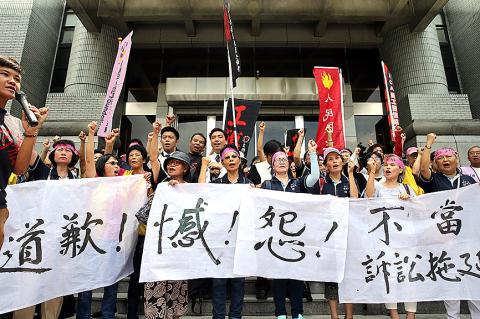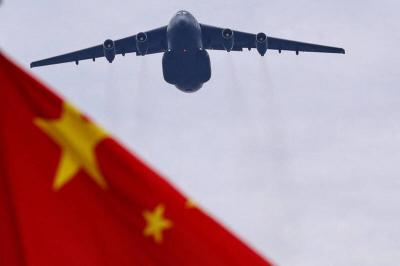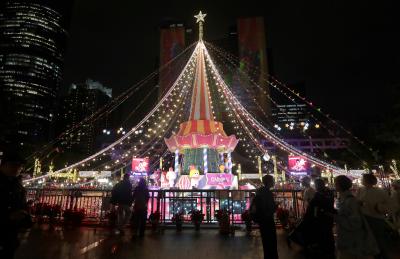The Supreme Court yesterday upheld a previous ruling and ordered Radio Corp of America (RCA) and its affiliates to pay NT$564.45 million (US$18.3 million at the current exchange rate) to 262 of its former Taiwanese employees and affected family members.
It referred another group of 246 plaintiffs to the Taiwan High Court for a retrial.
In earlier rulings on the case, the US company was found liable for the cancer and illnesses its employees contracted while handling organic solvents, which were later found to be carcinogenic, at the RCA factory in then-Taoyuan county.

Photo: CNA
Investigators also found that toxic waste was dumped around the factory, contaminating soil and underground water.
More than 200 employees have since died.
After the ruling, the RCA Self-Help Association, which is made up of former RCA employees and deceased workers’ family members, vowed to keep fighting, saying that they would not compromise on their demands.
Association leaders, who were joined by supporters and lawyers from the Legal Aid Foundation, said that the court-ordered figure did not meet their expectations, and they considered the retrial for 246 of the plaintiffs a setback.
“We do not know why the judges rejected compensation for the 246 plaintiffs, but we will continue the legal battle and will never compromise in our fight for justice,” RCA Self-Help Association president Liu Ho-yun (劉荷雲) said.
“We did not lose, and in a way, we did win, but the result was far from what we expected,” she said.
Liu said that the association has filed another lawsuit with the Taipei District Court on behalf of another 1,142 former employees and family members who are seeking compensation of NT$7.3 billion.
According to information from the association, more than 1,300 former RCA employees have been diagnosed with cancer, while 221 of them have died from cancer and related illnesses.
RCA opened its Taoyuan factory in 1970, under its subsidiary RCA Taiwan Ltd. The factory produced electronic appliances and parts for television sets.
It used more than 30 types of organic solvents, including trichloroethylene and tetracholorethene, which are classified as Group 2A carcinogens by the International Agency for Research on Cancer.
RCA ran several other plants in Taiwan from 1970 to 1992.
The company was in 1986 taken over by General Electric Co (GE), which later sold it to Thomson Consumer Electronics, the US subsidiary of France-based Thomson Multimedia, now called Technicolor SA.
The association filed the lawsuit in 2004, and it has since become one of the nation’s longest-running legal battles between a corporation and its employees.
Environmental groups and labor activists have described the contamination at the RCA factory as the worst industrial disaster in Taiwan’s history.
Yesterday’s decision came after a ruling by the Taiwan High Court in October last year, which ordered RCA, GE, Technicolor and Thomson to pay NT$718.4 million in compensation to the affected employees and their families.
In their ruling yesterday, judges reiterated that medical experts had testified that the incidence of cancer among former employees was up to 30 times higher than in the general population.
Judges said that the defendants had deliberately transferred a large portion of their assets out of Taiwan to reduce their financial liability when GE sold RCA to Thomson Consumer Electronics in 1988.
After the sale, it was found that executives transferred US$150 million into overseas bank accounts.
After the contamination was reported at the Taoyuan site in 1991, the company sold the building and land for about NT$1.9 billion the following year.
“RCA and its affiliated companies did not properly protect the safety and health of their workers. They did not inform them about the danger and toxic nature of the chemical substances used, and even tried to cover up and conceal evidence,” the ruling statement said. “Investigations found that the companies were deliberately deceitful ... and refused to provide information to the Environmental Protection Administration, which hindered the victims’ compensation claims.”

Beijing could eventually see a full amphibious invasion of Taiwan as the only "prudent" way to bring about unification, the US Department of Defense said in a newly released annual report to Congress. The Pentagon's "Annual Report to Congress: Military and Security Developments Involving the People's Republic of China 2025," was in many ways similar to last year’s report but reorganized the analysis of the options China has to take over Taiwan. Generally, according to the report, Chinese leaders view the People's Liberation Army's (PLA) capabilities for a Taiwan campaign as improving, but they remain uncertain about its readiness to successfully seize

Taiwan is getting a day off on Christmas for the first time in 25 years. The change comes after opposition parties passed a law earlier this year to add or restore five public holidays, including Constitution Day, which falls on today, Dec. 25. The day marks the 1947 adoption of the constitution of the Republic of China, as the government in Taipei is formally known. Back then the Chinese Nationalist Party (KMT) governed China from Nanjing. When the KMT, now an opposition party in Taiwan, passed the legislation on holidays, it said that they would help “commemorate the history of national development.” That

Trips for more than 100,000 international and domestic air travelers could be disrupted as China launches a military exercise around Taiwan today, Taiwan’s Civil Aviation Administration (CAA) said yesterday. The exercise could affect nearly 900 flights scheduled to enter the Taipei Flight Information Region (FIR) during the exercise window, it added. A notice issued by the Chinese Civil Aviation Administration showed there would be seven temporary zones around the Taiwan Strait which would be used for live-fire exercises, lasting from 8am to 6pm today. All aircraft are prohibited from entering during exercise, it says. Taipei FIR has 14 international air routes and

Snow fell on Yushan (Jade Mountain, 玉山) yesterday morning as a continental cold air mass sent temperatures below freezing on Taiwan’s tallest peak, the Central Weather Administration (CWA) said. Snowflakes were seen on Yushan’s north peak from 6:28am to 6:38am, but they did not fully cover the ground and no accumulation was recorded, the CWA said. As of 7:42am, the lowest temperature recorded across Taiwan was minus-5.5°C at Yushan’s Fengkou observatory and minus-4.7°C at the Yushan observatory, CWA data showed. On Hehuanshan (合歡山) in Nantou County, a low of 1.3°C was recorded at 6:39pm, when ice pellets fell at Songsyue Lodge (松雪樓), a